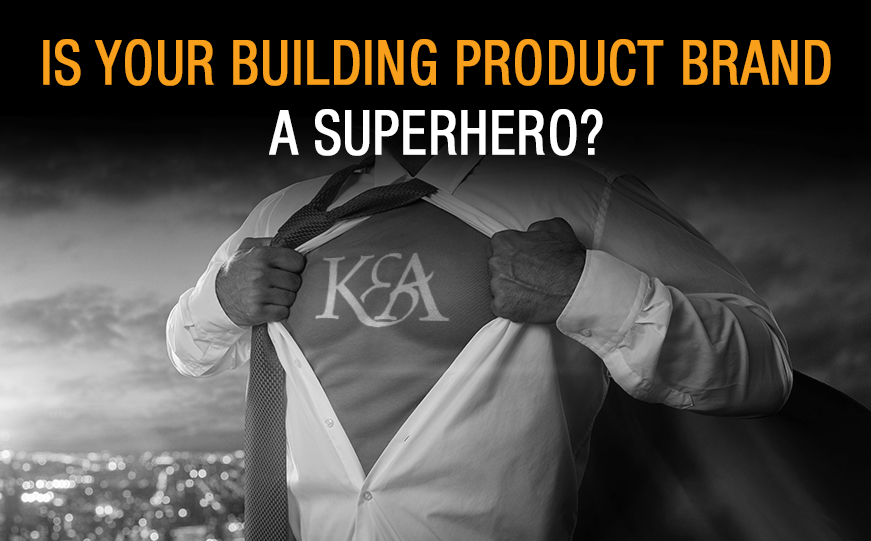As summer approaches, so does blockbuster movie season — and as our friends at Marvel and DC know — Americans love movies about superheroes. In fact, my kids are buzzing about the release of Black Widow and Venom. And why not? Ever since Superman flew onto the American scene in the 1930s, superheroes have been an enduring part of our pop culture.
According to the late Stan Lee of Marvel comics, an individual reaches superhero status by performing heroic deeds in a way that a normal person could not. But what about brands? Can a brand achieve superhero status?
The answer is yes, absolutely…read on to learn how to elevate your brand to hero status.
It Starts with a Story
Human beings are predisposed to react to stories, which is why storytelling is an essential component of marketing. Heroes — and even supervillains — always have great stories. Whether the last of a tribe of female Amazon warriors, or a reaction from the bite of a radioactive spider… there is always a compelling narrative to be shared.
Similarly, a brand’s story is much more than a dissertation of the products or services provided. “Features” and “benefits” can be shared with brochures. And on websites.
A brand story, on the other hand, allows building products to share a company’s history, culture, emotion, inspirations, and even their aspirations. Like all good storylines… it’s important to layer the tale — to include the idea or event that sparked the company’s beginnings — and chronicle the brand’s story, as it has evolved.
Humanize the Brand
One reason audiences can relate to our caped crusaders — is that no matter how impressive their superpowers are — we can align with their human frailties.
Superman’s affection for Lois Lane… or Spidey’s aversion to ethyl chloride (a pesticide)… even Black Panther’s love for Wakanda… can be considered human attributes. Each imperfection allows us to view our heroes as people we admire. After all, no one is perfect.
Brands, too, should ensure that their customers and prospects know the authentic, human side of the company.
Although technological advancements, like the Internet, provide convenient — and often immediate — gratification… there is no artificial intelligence (AI) substitute for the human touch. People are social creatures who desire interactions with those they find familiar or comfortable.
Humanizing a brand starts by ensuring that the culture stays true to a company’s tenets and code of ethics. Marketing elements should reflect authenticity and, of course, consistency. Content should be targeted more towards education… than selling. Allow audiences to “take a peek behind the curtain” by posting front office, operations, and even plant activities on social media.
Manufacturers also can deploy influencers to help amplify messaging via a trusted and familiar entity. Sponsored blog posts are an excellent — and relatively easy — way to bring the human touch to a brand.
Symbolism Matters
While the costume has evolved over time, the iconic “S” emblazoned on Superman’s chest has been a consistent mainstay for Americans since the 1930s. And no matter the decade, everyone knows that a sky lit up with a bat symbol means there is trouble in Gotham City.
Your brand’s visual identity helps to tell its story too. Logos, typographical styles, and color palettes are vital elements that — when consistent — will resonate with target audiences… and will contribute to “brand promise.”
This does not mean marketers are stuck with the same logo and type treatments forever. It is perfectly acceptable to update a brand’s visual identity every few years. In fact, in many cases, a brand refresh is recommended.
A great industry example of evolved branding is Caterpillar. Founded at the turn of the 19th century, Caterpillar’s logo has undergone seven refinements to get to where it is today. And, in case you’re wondering… Superman’s suit has received some 15 updates.
Define Your Brand’s Mission
Most of our beloved superheroes are on a mission to fight crime. And make the world a better place. Building product brands also should have a mission which they are proud to stand behind. And confident to share.
The current environment provides an abundance of opportunities for building product manufacturers to rise to the occasion. Building scientists are at the forefront of developing materials and systems that provide sustainability… allowing for the preservation of natural resources. Manufacturers are helping to safeguard the health of building occupants by developing systems that improve indoor air quality. Similarly, companies that produce products such as quartz countertops ensure easily sanitized surfaces.
There are also superheroes within every organization — your associates. The research and development team invents superior products. While the marketing team promotes those products creatively. And the sales force brings them to the channel. While great strategies can be accomplished by an individual, a team effort — when fully aligned — is simply stronger.
Just consider the superheroes “Avengers”. Thor makes his hammer perform magical feats. And we all know that Iron Man should never be trifled with. Had they not worked as a team… it is doubtful they would have prevailed over Thanos.
Similarly, it’s vital to create “super teams” within your organization. For example, marketing and sales can better work together to ensure efforts are aligned. And customer service can share product feedback and warranty claims with R&D to help correct potential product deficiencies.
Something new always will seem challenging. But remember, a hero puts aside his/her fears and leaps right into action.
When you need some help transforming your brand to superhero status, send an email to sk@kleberandassociates.com.




